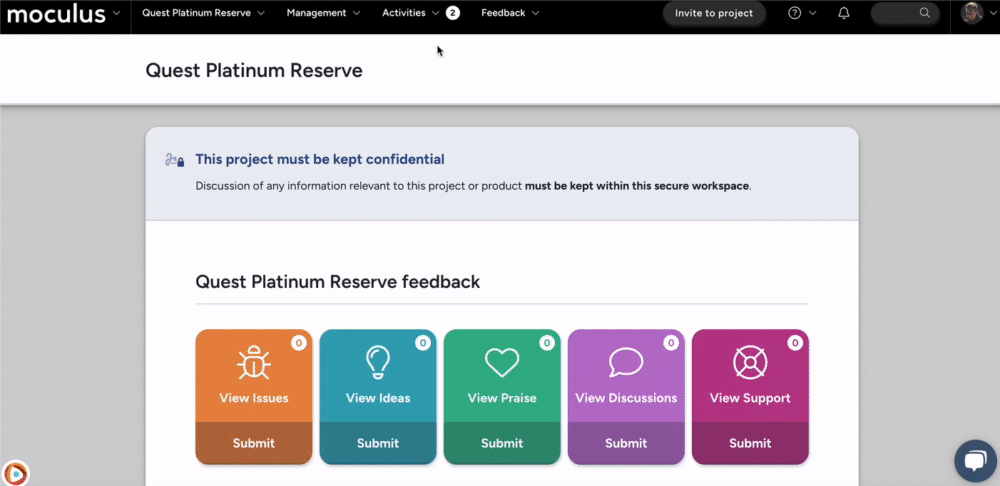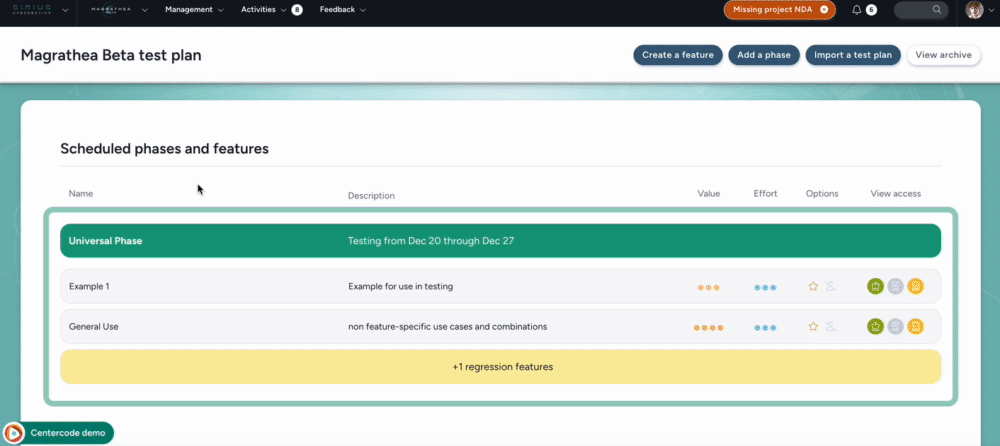Repeatedly re-test Features across multiple Phases
This article applies to Pro, Team, and Legacy editions.
What are Regression Features?
As the name implies, Regression is a Feature type that allows you to repeatedly re-test Features across multiple Phases, over time. They’re designed to facilitate testing of Features like “Build Stability” or “Performance” from sprint to sprint without requiring you to go through the manual steps of marking those features for Re-Test. From the tester’s Activity Flow, they look like any other feature. However, from a Test Planning perspective, Regression Features are organized a little differently and get special treatment in Dashboards.
Why use Regression Features?
This Feature type is ideal for iterative versioning, such as driver or firmware updates. Regression Features also collect unique satisfaction scores for each Phase in which they're included (determined via checkbox within each Phase) so you can compare satisfaction results between versions and still view the Regression Features holistically.
Compared to the “start over” nature of Re-Test, Regression Features allow you to retain all the captured data from previous Phases and also prompt testers to once again go through the Feature Activity and provide Satisfaction and other feedback.
How do I configure Regression Features?
You’ll find the Regression Features category within your Project’s Test Planning tool under the Other Feature Types section and above New User Features. From there, you can hover over the Regression Features header and click the plus sign to create new features for that Feature type. Follow the same steps to create a Regression Feature as you would any other feature.
Once you have Regression Features available, to include Regression Features in your active testing Phases, simply modify an existing Phase and select to “Include Regression Features.”
Once your Regression Features are included in an active Phase, testers will submit Satisfaction scores relative to that testing phase. You can view the results of those scores in aggregate by viewing the appropriate Feature Dashboard. Further, you can filter the Feature Dashboard down to a specific Phase Range to focus on specific iterations or versions of the Feature.


